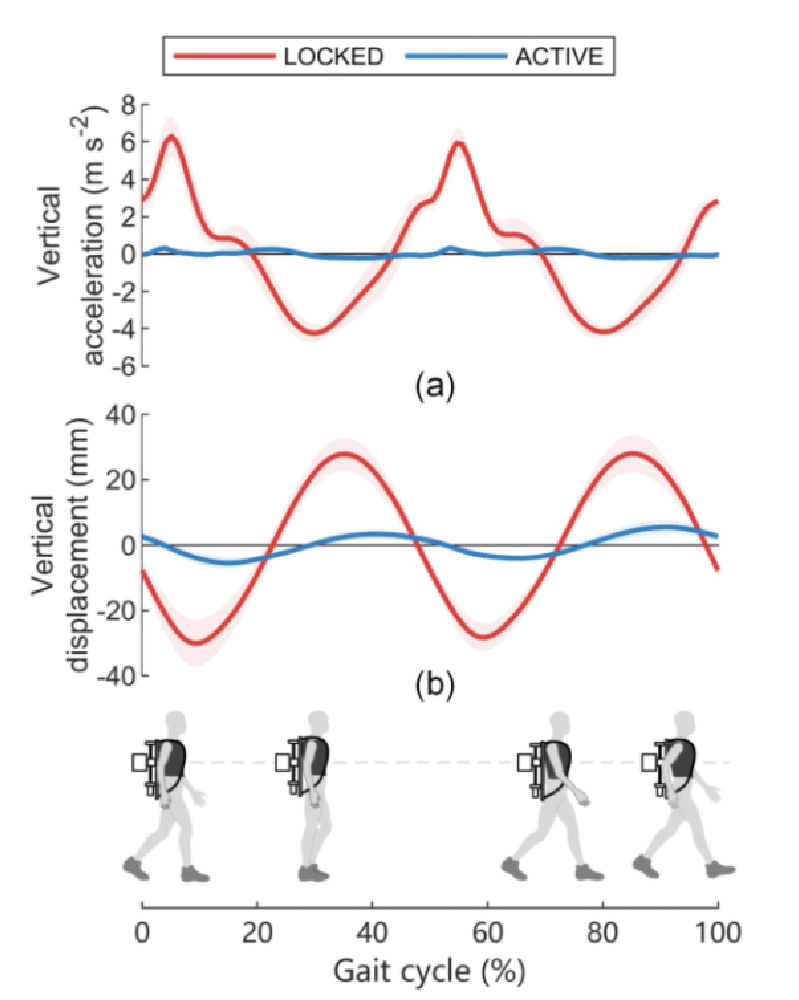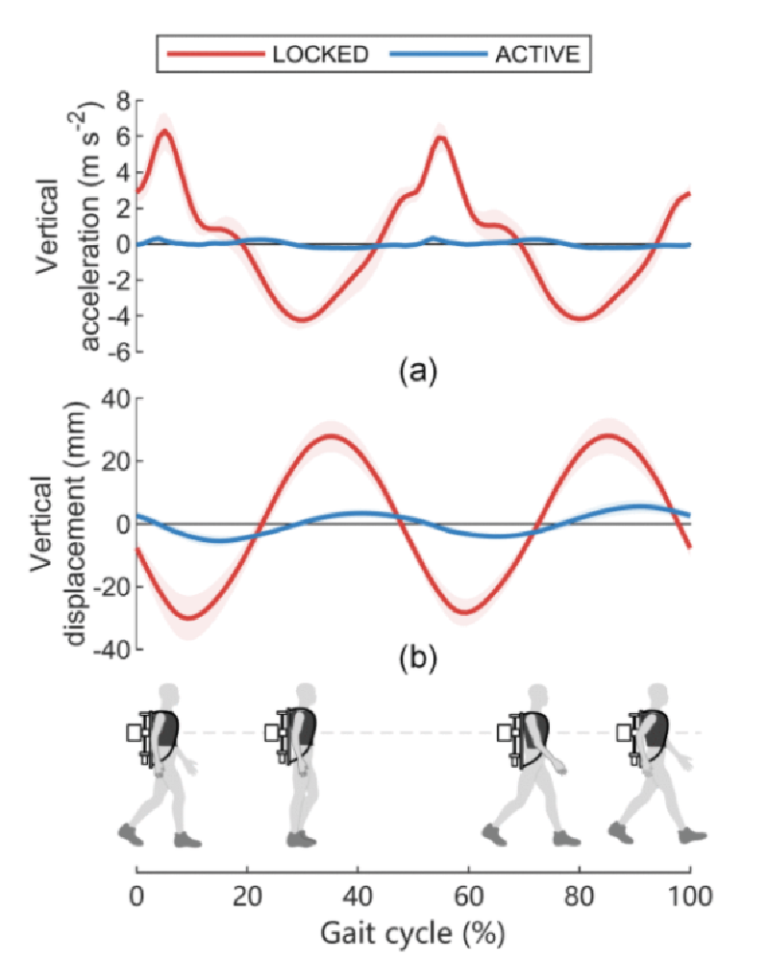
Loaded walking with a rucksack results in both gravitational and inertial forces of the load that must be borne by human carriers. The inertial force may be the source of metabolic burden and musculoskeletal injuries. This paper presents a lightweight backpack with a disturbance observer-based acceleration control to minimize the inertial force. The backpack was evaluated by seven participants walking on a treadmill at 5 km h −1 with a 19.4 kg load. Three experimental conditions were involved, including walking with a locked load (LOCKED), with an acceleration-controlled load (ACTIVE) using the designed backpack and walking with the same load using a rucksack (RUCKSACK). Our results showed that the ACTIVE condition reduces the load acceleration by 98.5% on average, and reduce the gross metabolic power by 8.0% and 11.0% as compared to LOCKED and RUCKSACK conditions respectively. The results demonstrate that the proposed active backpack can improve the loaded walking economy compared with a conventional rucksack in level-ground walking.

